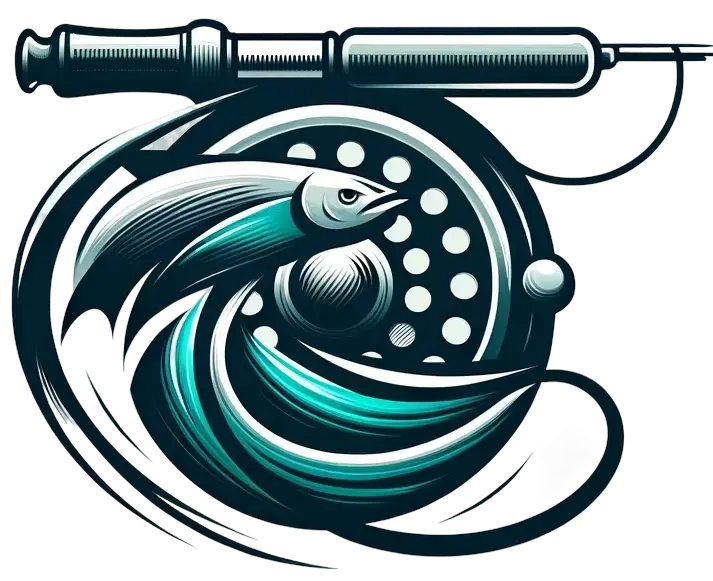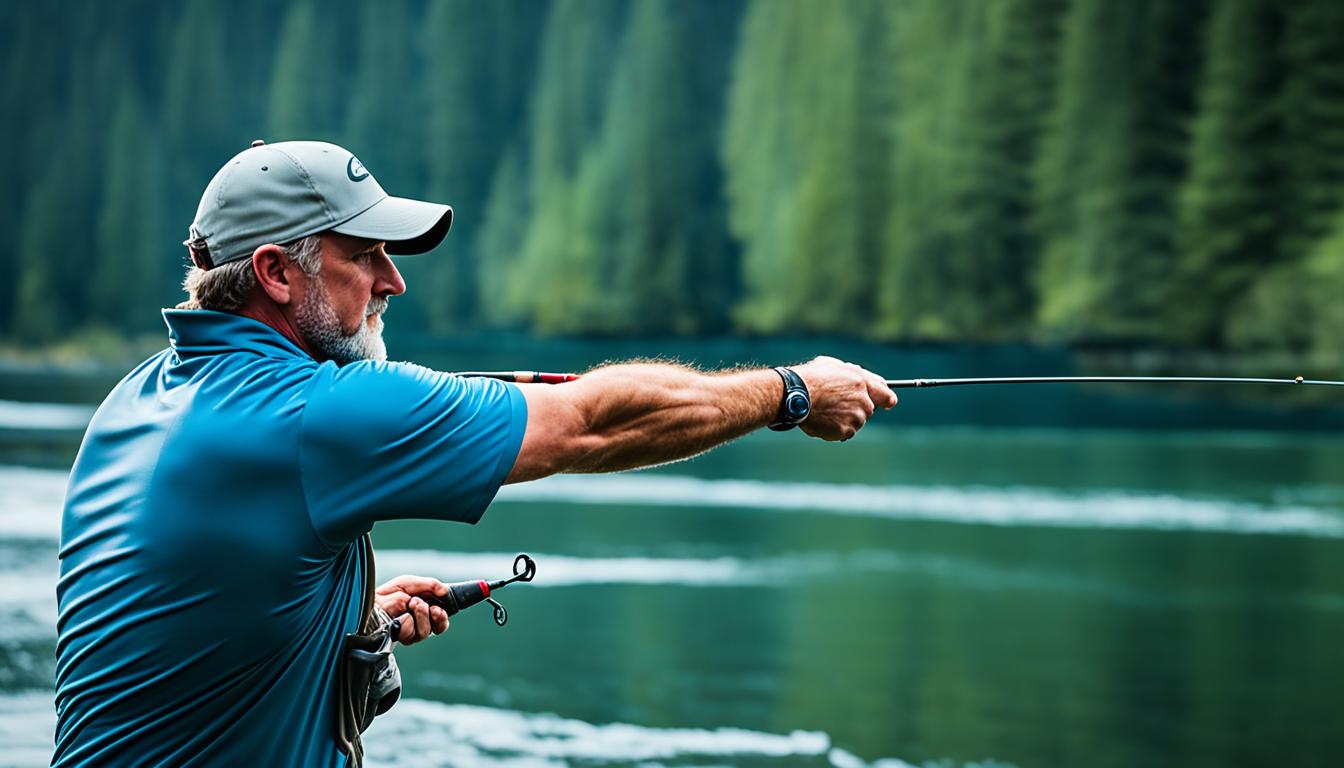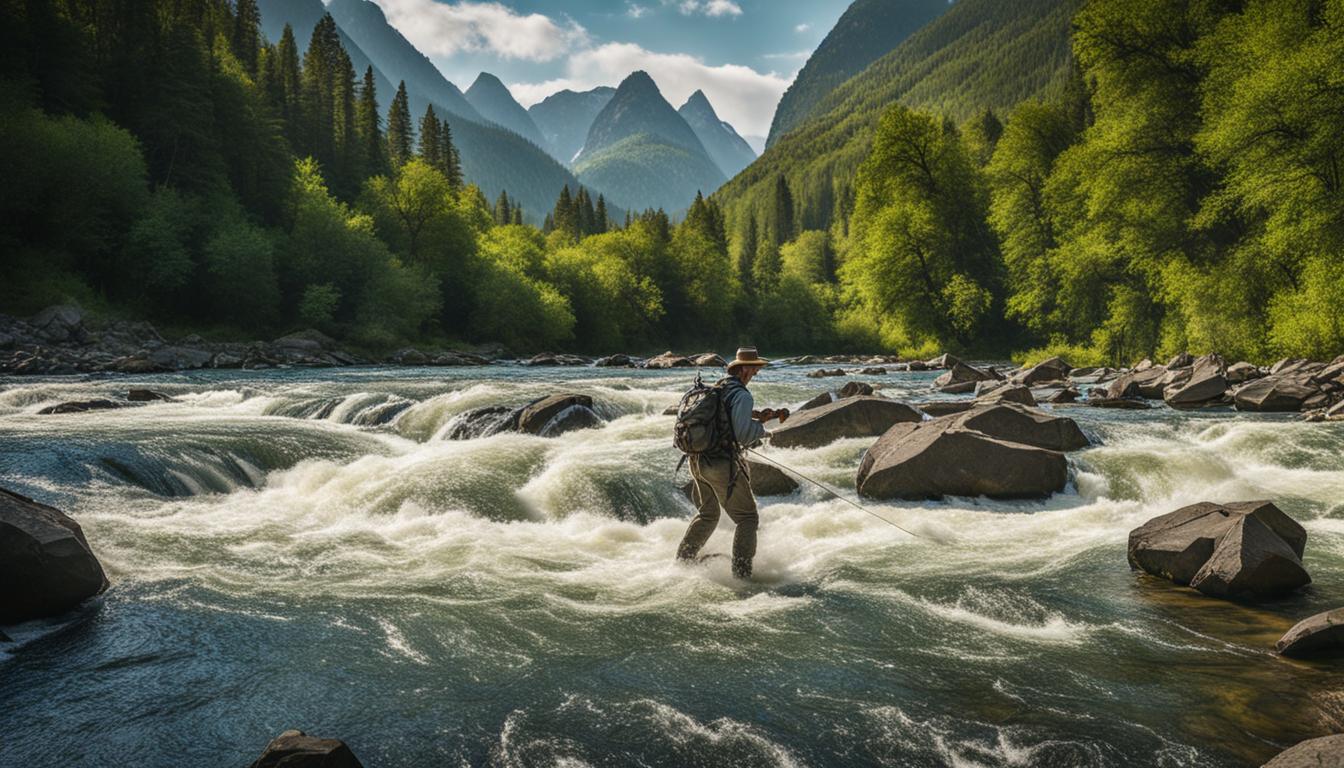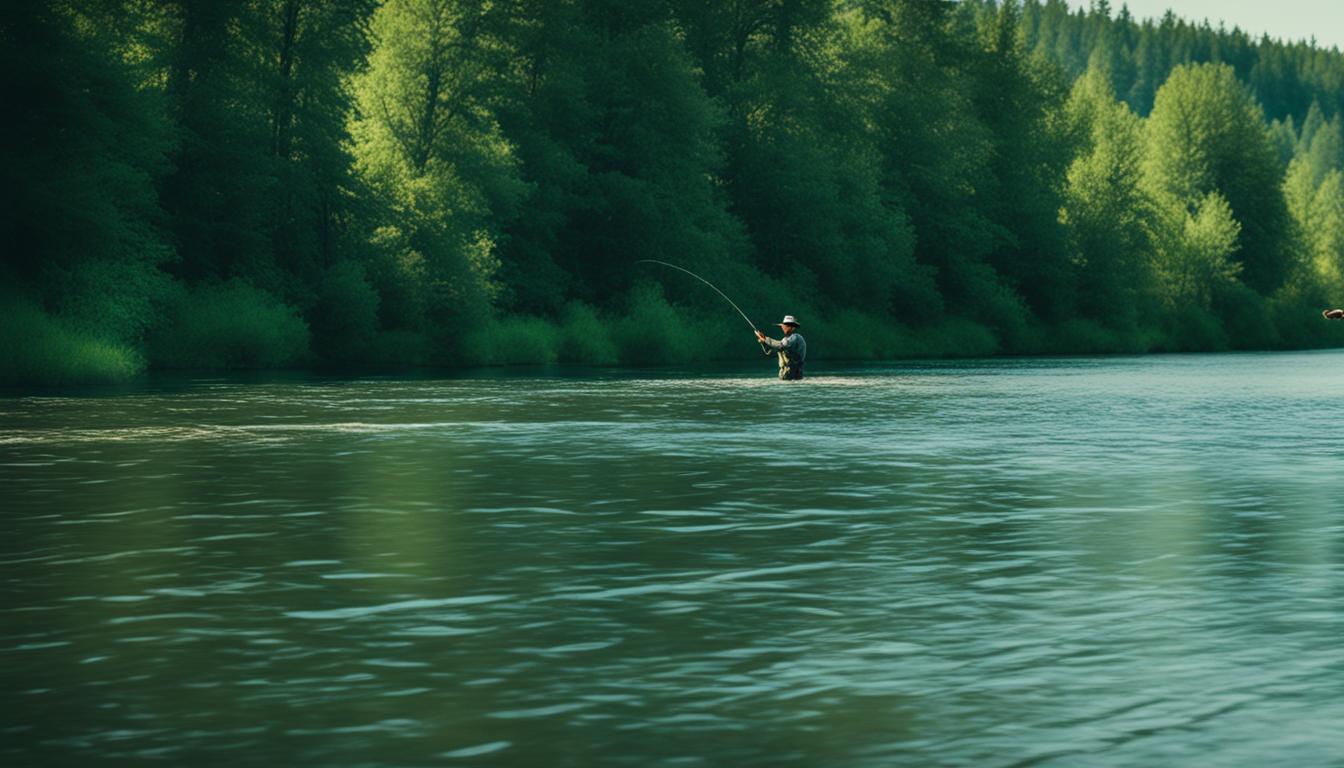Are you ready to take your wet fly fishing skills to the next level? Whether you’re a novice or a seasoned angler, mastering the art of wet fly fishing can greatly enhance your success on the water. In this article, we’ll share expert tips and techniques that will help you become a more confident and effective wet fly fisherman.
Wet fly fishing involves using submerged flies to entice fish. This technique is particularly effective in streams and rivers, where the drift of the fly imitates the natural movement of aquatic insects. By understanding the nuances of wet fly fishing, you can increase your chances of attracting fish and landing that trophy catch.
From selecting the right flies and fly lines to perfecting your drift technique, there are various aspects to consider when engaging in wet fly fishing. We’ll delve into each of these topics and provide you with valuable insights and strategies that will take your wet fly fishing game to new heights.
- Master the art of the drift to imitate natural insect movement.
- Select the right flies and fly lines for optimal results.
- Understand the nuances of wet fly fishing in different water conditions.
- Experiment with traditional wet fly patterns and modern nymphs.
- Enhance your overall angling experience with wet fly fishing techniques.
Understanding Stillwater Fly Lines with Phil Rowley
In an in-depth discussion with Phil Rowley, a fly fishing expert, we uncover the secrets of stillwater fly lines. Phil shares his insights on selecting the right fly lines for different fishing conditions and reveals his top three must-have lines for success on the water. This information is invaluable for any angler looking to improve their stillwater fly fishing skills.
The Importance of Stillwater Fly Lines
When it comes to fly fishing in stillwater, the right fly line can make all the difference. Whether you’re targeting trout, bass, or other species, understanding the nuances of stillwater fly lines is essential. Phil Rowley, renowned for his expertise in stillwater fly fishing, is here to guide us through the intricacies of selecting the perfect line.
According to Phil, a stillwater fly line serves multiple purposes. It not only carries the fly to the desired location but also provides the necessary control and presentation to entice fish. The right line can make your flies behave naturally, imitating the movement of their prey and increasing your chances of success.
Choosing the Right Stillwater Fly Line
There are various factors to consider when choosing a stillwater fly line. Phil highlights the importance of understanding the water conditions, the depth at which you’ll be fishing, and the specific habits of the target species. Different lines are designed to perform optimally in different scenarios, so selecting the right one is crucial.
Phil suggests using a floating line for fishing near the surface or in shallow areas where the fish are feeding. This type of line allows for better control and can be easily manipulated to create enticing movements. On the other hand, when fishing deeper waters, a sinking line is recommended to reach the desired depth and maintain contact with the fly throughout the retrieve.
Phil Rowley’s Top Three Stillwater Fly Lines
After years of experience and extensive testing, Phil Rowley has narrowed down his top three stillwater fly lines that every angler should consider adding to their arsenal:
- Stillwater Nymph Line: Designed specifically for anglers who primarily fish nymphs in stillwater, this line offers excellent sensitivity and control for precise presentations.
- Hover Line: An intermediate line that hovers just below the surface, allowing your flies to swim with a more natural motion. This line is versatile and can be used in various water depths.
- Sinking Line: Ideal for targeting fish in deeper waters, a sinking line enables you to fish at different depths and explore the entire water column effectively.
Exploring Traditional Wet Flies and Modern Nymphs
When it comes to wet fly fishing, two types of fly patterns dominate the scene – traditional wet flies and modern nymphs. These fly patterns have proven their effectiveness in enticing fish and are essential tools in an angler’s tackle box.
Traditional wet flies have been used for centuries and are designed to mimic underwater insects and other aquatic creatures. These flies often feature soft materials, such as feathers, fur, or synthetic fibers, and are tied to resemble a variety of prey items. From classic patterns like the Adams wet fly to the timeless Woolly Bugger, traditional wet flies continue to produce results on the water.
Modern nymphs, on the other hand, take a more innovative approach to fly fishing patterns. These flies are specifically designed to imitate the immature form of aquatic insects, known as nymphs. They often incorporate bright colors, flash materials, and specialized hooks to catch the attention of fish.
“Conspicuity” and “hot spot” nymphs are two types of modern nymph patterns that have gained popularity among fly anglers. These flies feature vibrant colors or contrasting materials that create a hotspot, grabbing the attention of fish in a crowded stream or river.
Understanding the history and evolution of these fly patterns can provide valuable insights into their effectiveness and help you choose the right pattern for the conditions you’re facing on the water.
Traditional Wet Fly Patterns
Traditional wet fly patterns have a long and storied history in the world of fly fishing. These flies have been used by anglers for centuries and continue to produce results to this day. Below are a few examples of popular traditional wet fly patterns:
| Fly Pattern | Description |
|---|---|
| Adams Wet Fly | A versatile pattern that imitates a variety of insects, including mayflies and caddisflies. |
| Elk Hair Caddis | An effective caddisfly imitation that floats well and entices fish to rise to the surface. |
| Soft Hackle Hare’s Ear | A classic wet fly pattern that imitates a range of aquatic insects, especially caddisfly larvae. |
Modern Nymph Patterns
Modern nymph patterns have revolutionized the world of fly fishing, offering anglers new ways to imitate the underwater life that fish prey upon. Here are a few examples of popular modern nymph patterns:
| Fly Pattern | Description |
|---|---|
| Pheasant Tail Nymph | A versatile pattern that imitates various aquatic insects, especially mayfly nymphs. |
| Hare’s Ear Nymph | A widely-used pattern that imitates a range of aquatic insects, including stoneflies and caddisflies. |
| Prince Nymph | A flashy pattern that imitates a variety of nymphs and attracts fish with its contrasting colors. |
By understanding the history, characteristics, and effectiveness of both traditional wet flies and modern nymph patterns, you can expand your fly fishing repertoire and increase your chances of success on the water. Remember to experiment with different patterns and techniques to find what works best for your local fishing conditions.
The Art of Drift Boat Building with Brownie Liles
Join us in a fascinating conversation with Brownie Liles, an experienced guide and the mastermind behind Blue Ridge Boatworks. Brownie shares insights into the process of building drift boats specifically designed for fly fishing in East Tennessee. Discover the unique features and craftsmanship that make these boats perfect for navigating rivers and enhancing your fishing experience.
Why Drift Boat Building is Important
Drift boat building is an essential aspect of creating a fly fishing experience tailored to the specific needs of anglers. Brownie Liles understands the intricacies of designing boats that optimize maneuverability and functionality in river environments. His expertise ensures that each drift boat is meticulously crafted to elevate your fishing adventures.
“Building drift boats is my passion. I believe that a well-designed boat can greatly enhance the angling experience. It’s not just about the aesthetics, but also about the performance and comfort of the anglers on board. That is why I put so much dedication and attention to detail into every boat I build.” – Brownie Liles
The Craftsmanship and Features
When it comes to fly fishing gear, the right boat can make all the difference. Brownie Liles pays meticulous attention to the craftsmanship and features of his drift boats. Here are some of the key elements that set Blue Ridge Boatworks apart:
- High-Quality Materials: Each boat is constructed using top-notch materials, ensuring durability and longevity.
- Streamlined Design: The sleek and aerodynamic design of the boats enhances maneuverability on the water.
- Ample Storage Space: The boats are equipped with ample storage compartments to accommodate all your fly fishing gear.
- Comfortable Seating: The seats are ergonomically designed to provide maximum comfort during long fishing trips.
- Stability and Balance: The boats are built to offer stability and balance, allowing anglers to cast with ease.
Brownie Liles: A Drift Boat Building Expert
Brownie Liles has dedicated years to perfecting the art of drift boat building. With his extensive knowledge and experience, he has become a trusted name in the fly fishing community. Anglers around the world rely on his expertise to provide them with top-of-the-line drift boats that meet their specific needs.
Whether you’re a seasoned angler or a beginner, investing in a drift boat designed by Brownie Liles can take your fly fishing adventures to the next level. Explore the beauty of East Tennessee’s rivers and experience the unparalleled joy of fishing from a carefully crafted drift boat.

| Features | Description |
|---|---|
| High-Quality Materials | Meticulously selected materials ensure durability and longevity. |
| Streamlined Design | Sleek and aerodynamic design enhances maneuverability on the water. |
| Ample Storage Space | Spacious compartments accommodate all your fly fishing gear. |
| Comfortable Seating | Ergonomically designed seats provide maximum comfort on long fishing trips. |
| Stability and Balance | Built to offer stability and balance for easy casting. |
Uncovering the Fly Fishing Wonders of Northern BC with Daniel Schildknecht
Embark on a journey to the untouched waters of Northern British Columbia, where the thrill of fly fishing meets the serenity of stunning wilderness settings. Join us as we explore the fly fishing wonders of Northern BC with Daniel Schildknecht from NR Adventures.
In this hidden gem of a region, you’ll discover abundant populations of rainbow trout and Arctic Grayling, making it a haven for trophy fish enthusiasts. Northern BC offers a true fly fishing paradise, where pristine lakes and rivers teem with these prized species.
“The thrill of landing a trophy fish amidst the picturesque backdrop of Northern BC is an experience every angler dreams of,” says Daniel Schildknecht. “The raw beauty of the surroundings combined with the exceptional fishing opportunities make this region a must-visit for fly fishing enthusiasts.”
NR Adventures, led by Daniel Schildknecht, specializes in personalized fishing expeditions in Northern BC. With their extensive knowledge of the area and passion for fly fishing, they offer unforgettable experiences tailored to each angler’s preferences.
Experience the wonders of fly fishing in this remote wilderness, where you can cast your line among breathtaking landscapes, clear waters, and the chance to catch truly trophy-sized fish. Whether you’re a seasoned angler or new to the sport, the allure of Northern BC’s fly fishing adventures is irresistible.
For a glimpse of the remarkable beauty that awaits you, indulge in the captivating image below:
| Key Highlights of Fly Fishing in Northern BC |
|---|
| Abundant populations of rainbow trout and Arctic Grayling |
| Pristine lakes and rivers |
| Stunning wilderness settings |
| Trophy-sized fish |
| Personalized fishing expeditions |
Mastering Two-Handed Casting with Spey Legend Al Buhr
Dive into the world of two-handed casting with spey legend Al Buhr. Experience the thrill and precision of this unique casting technique that allows anglers to cover more water and target elusive fish. Al shares his top three casting tips that will revolutionize your spey casting technique, whether you’re a beginner or an experienced angler.
The History of Two-Handed Casting
Two-handed casting, also known as spey casting, originated in the Scottish Highlands as a means to effectively cast long lines on large rivers like the River Spey. Over the years, the technique evolved and gained popularity worldwide for its efficiency and versatility.
With its roots in Atlantic salmon fishing, spey casting has found its place in various fishing scenarios, such as steelhead fishing in the Pacific Northwest, trout fishing on rivers, and even saltwater applications.
Al Buhr’s Top Three Spey Casting Tips
- Focus on Timing and Rhythm: To achieve smooth and effortless casts, timing and rhythm are crucial. Practice the acceleration and deceleration of your casting stroke to generate power and maintain control throughout the cast.
- Master the D-loop: The D-loop is a fundamental element of spey casting. It forms the foundation for loading the rod and generating line speed. Practice forming a deep, well-formed D-loop behind you before initiating the forward cast.
- Utilize the Bottom Hand: The bottom hand plays a significant role in spey casting. It provides power and control during the cast. Keep a firm grip on the bottom hand and use it to smoothly transition from the back cast to the forward cast, ensuring a seamless transfer of energy.
By implementing these tips into your casting routine, you’ll see significant improvements in your spey casting ability and increase your chances of hooking into fish.
Al Buhr’s Fly Pattern Techniques
“When it comes to fly patterns, I prefer to use a combination of traditional and contemporary designs. I find that the perfect blend of classic and innovative fly patterns can be irresistible to fish.”
Al has developed his unique fly pattern techniques that have proven successful in enticing steelhead and other species. He combines timeless fly patterns, such as the Green Butt Skunk and the Purple Peril, with modern variations that incorporate flashy materials and hot spots to grab the attention of fish.
With Al Buhr’s expertise, you can master the art of two-handed casting and discover the effectiveness of his fly pattern techniques. Enhance your angling experience and increase your chances of landing trophy fish with these invaluable insights.
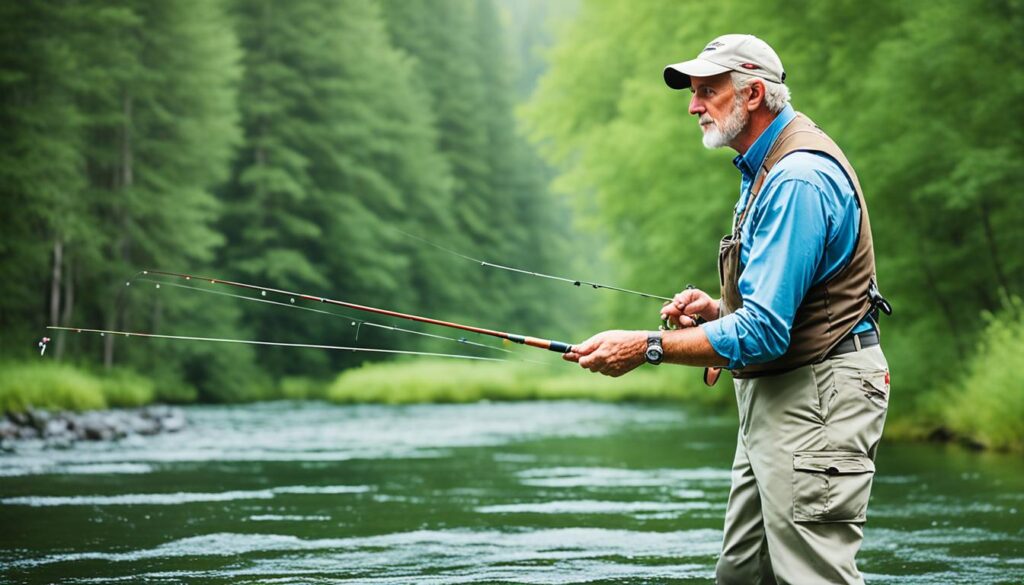
Now that you have learned the fundamentals of two-handed casting and gained insights into Al Buhr’s techniques, it’s time to hit the water and put your newfound knowledge into practice. Whether you’re targeting steelhead on a majestic river or exploring remote trout streams, mastering two-handed casting will open up a world of possibilities and unforgettable angling experiences.
The Allure of Wet Fly Fishing: Why It’s Worth Your Time
Wet fly fishing offers a unique and rewarding angling experience. It’s a technique that has stood the test of time and continues to attract anglers from all over the world. In this section, we will explore the allure of wet fly fishing and why it’s worth your time to give it a try.
One of the key benefits of wet fly fishing is the excitement of the drift. Unlike dry fly fishing where the fly floats on the surface, wet flies are submerged beneath the water. This allows you to imitate the natural movement of insects and other aquatic creatures, enticing fish to strike. The thrill of watching your fly dance in the current and feeling the tug of a fish is unmatched.
Another advantage of wet fly fishing is the versatility it offers. Wet flies come in a wide variety of patterns, sizes, and colors, allowing you to adapt to different fishing conditions and target a range of fish species. Whether you’re fishing for trout in a river or bass in a lake, wet flies can be effective in enticing strikes.
“Wet fly fishing allows you to explore different depths and cover more water, increasing your chances of success.”
One of the greatest benefits of wet fly fishing is its ability to cover more water and explore different depths. By manipulating the line and controlling the drift, you can present your fly at various depths and locations, increasing your chances of attracting fish. This makes wet fly fishing an excellent technique for larger bodies of water where fish may be dispersed.
Additionally, wet fly fishing is a versatile technique that can be used in different seasons and weather conditions. While dry fly fishing is typically associated with spring and summer, wet fly fishing can be effective year-round. It allows you to adapt to changing conditions and maximize your time on the water.
Overall, wet fly fishing provides a unique and immersive angling experience that is worth your time. From the excitement of the drift to the versatility of wet flies, this technique offers a range of benefits for anglers of all skill levels. So go ahead, grab your gear, and explore the allure of wet fly fishing.
| Benefits of Wet Fly Fishing |
|---|
| Excitement of the drift |
| Versatility in fly patterns |
| Ability to cover more water |
| Year-round effectiveness |
Conclusion
Wet fly fishing techniques are a valuable skill for any angler. The insights and expert tips shared in this article can help elevate your wet fly fishing game and improve your success on the water. Whether you’re a beginner or experienced angler, mastering the art of the drift and exploring different fly patterns can open up a whole new world of fishing possibilities.
By understanding the nuances of wet fly fishing, you can take advantage of its versatility and adaptability in various fishing conditions. The art of the drift allows you to mimic prey naturally and entice fish to strike. Additionally, experimenting with traditional wet flies and modern nymphs adds excitement and allure to your fishing experience.
So, grab your gear and head out to the water to put these wet fly fishing techniques into action. Immerse yourself in the beauty of streams and rivers, and embrace the challenge and satisfaction that wet fly fishing offers. Remember to practice patience, observe the surroundings, and adapt your strategy accordingly. With time and experience, you’ll become a master of wet fly fishing and enjoy the thrill of reeling in trophy-worthy catches.
FAQ
What is wet fly fishing?
Wet fly fishing is an angling technique that involves fishing with submerged flies. It is typically done in streams and rivers, and the flies used are designed to imitate insects or small fish that are underwater.
What are wet fly fishing techniques?
Wet fly fishing techniques include techniques like the swing, the dead drift, and the drop-back. These techniques involve presenting the fly in a way that mimics the movement of natural prey, enticing fish to strike.
What are the best wet flies for fishing?
Some popular wet flies for fishing include the Woolly Bugger, the Pheasant Tail Nymph, and the Hare’s Ear Nymph. These flies are versatile and can imitate a range of underwater insects and baitfish.
How do I fish with wet flies?
To fish with wet flies, you’ll want to cast your line upstream or across the current and allow the fly to drift downstream. You can use different techniques to control the speed and depth of the drift, depending on the fishing conditions and the behavior of the fish.
What is the wet fly fishing setup?
A typical wet fly fishing setup includes a fly rod, a reel, a fly line, and a leader. The rod and reel should be balanced and suited to the size of flies and fish you’ll be targeting. The fly line should be a sinking or sink-tip line to help get your flies down to the desired depth.
What gear do I need for wet fly fishing?
In addition to the rod, reel, line, and leader mentioned earlier, you’ll also need wet flies, line clippers, forceps or pliers for removing hooks, and a net for landing fish. It’s also a good idea to have a vest or tackle bag to keep all your gear organized and easily accessible.
What are some wet fly fishing tricks?
Some wet fly fishing tricks include using a combination of wet flies and nymphs, varying your retrieve speed and depth, and paying attention to the behavior of the fish. It’s also important to have a good understanding of the insects and baitfish that are present in the water you’re fishing.
What are wet fly fishing strategies?
Wet fly fishing strategies can vary depending on the fishing conditions and the behavior of the fish. Some common strategies include targeting fish that are feeding near the surface or in deeper water, using different fly patterns to imitate different types of prey, and adjusting your presentation based on the fish’s response.
